click box to play audio

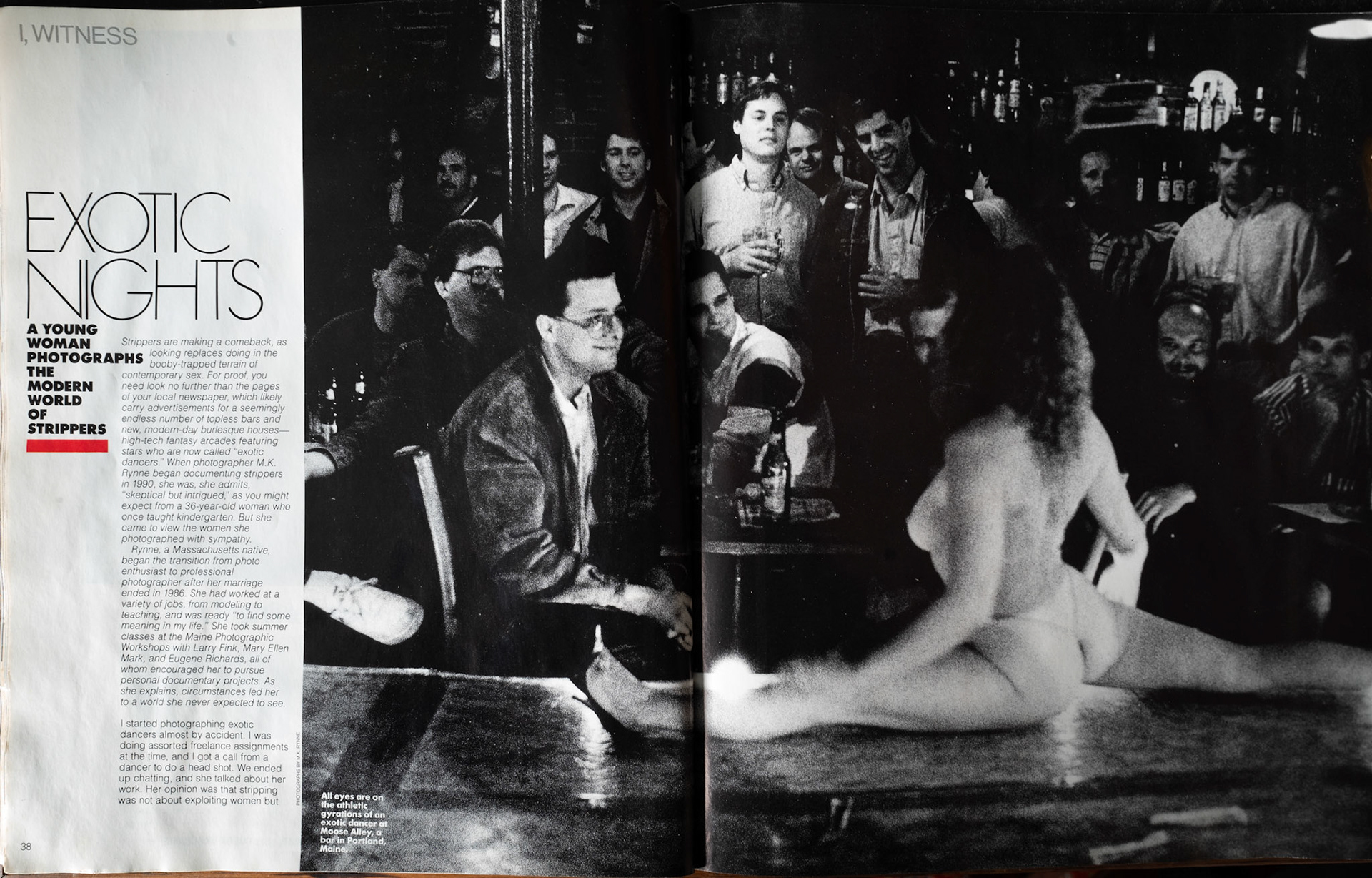
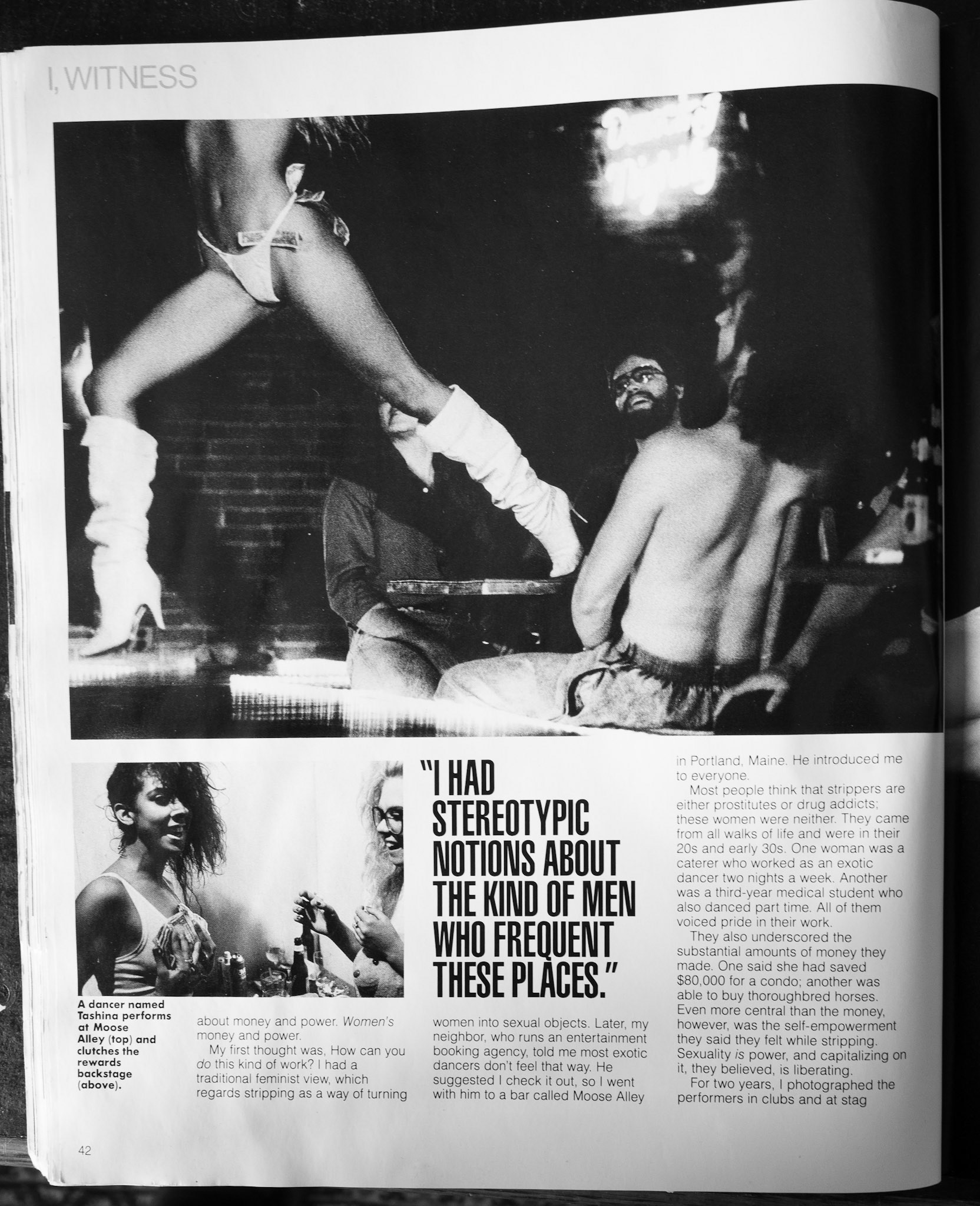
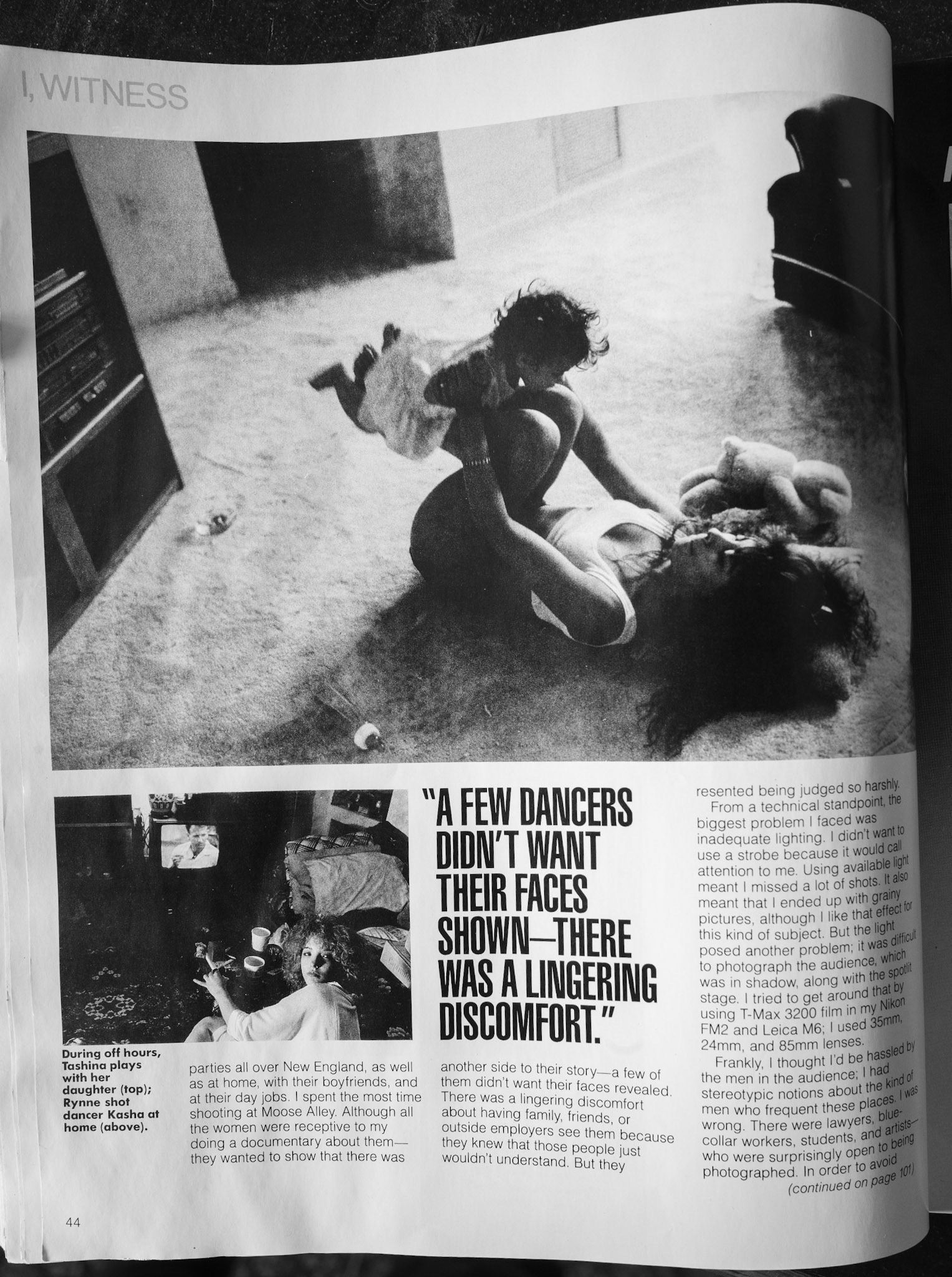
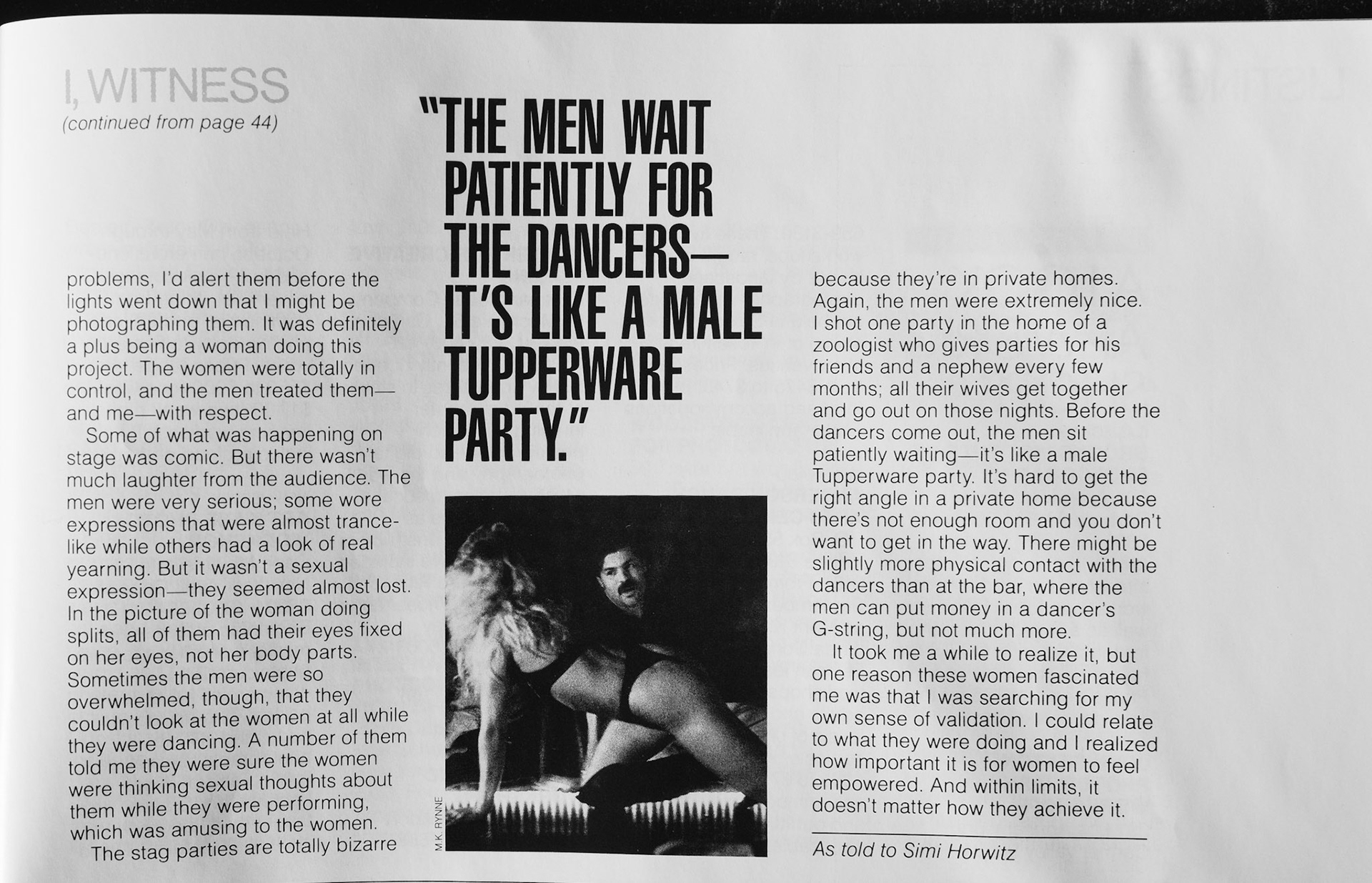
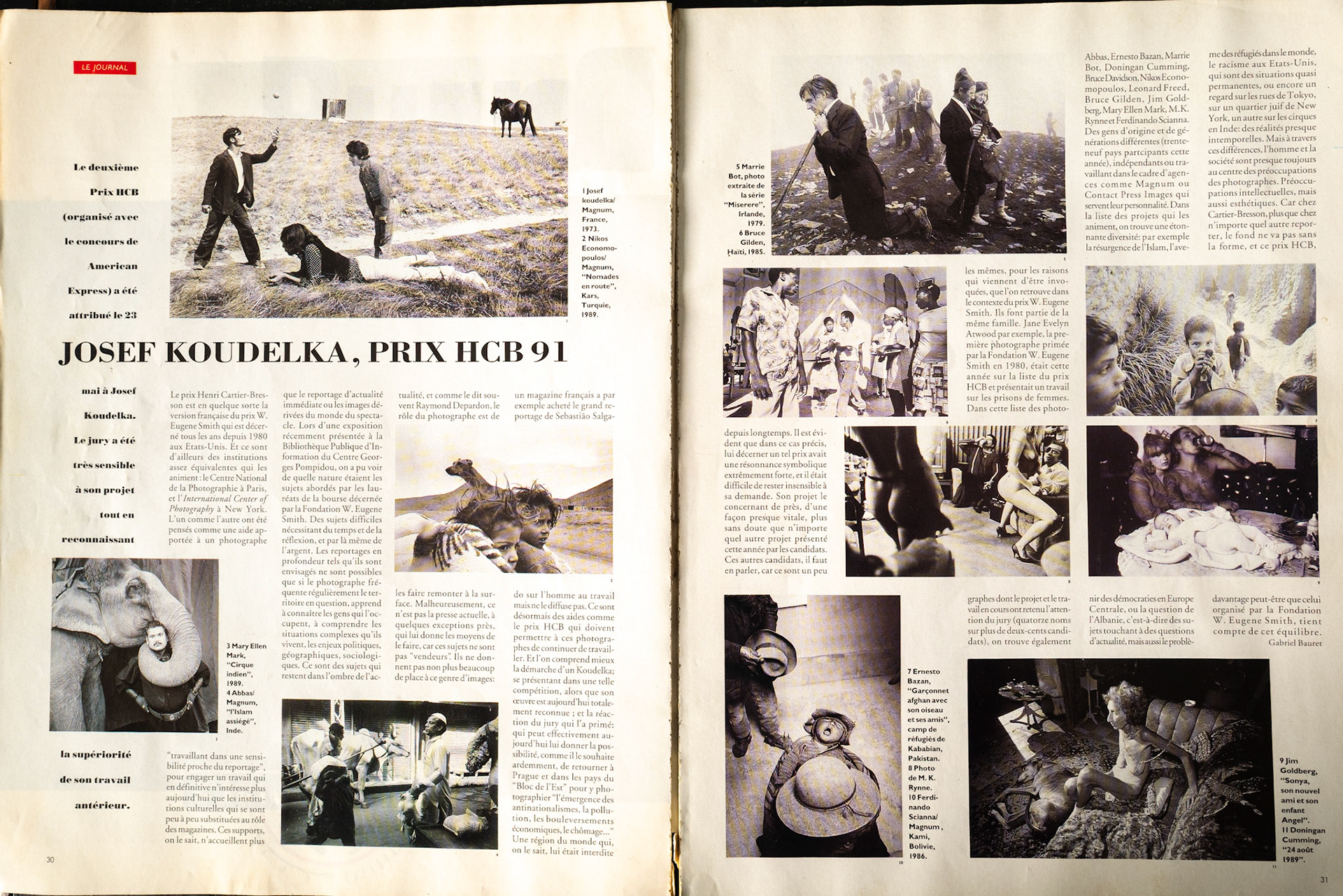
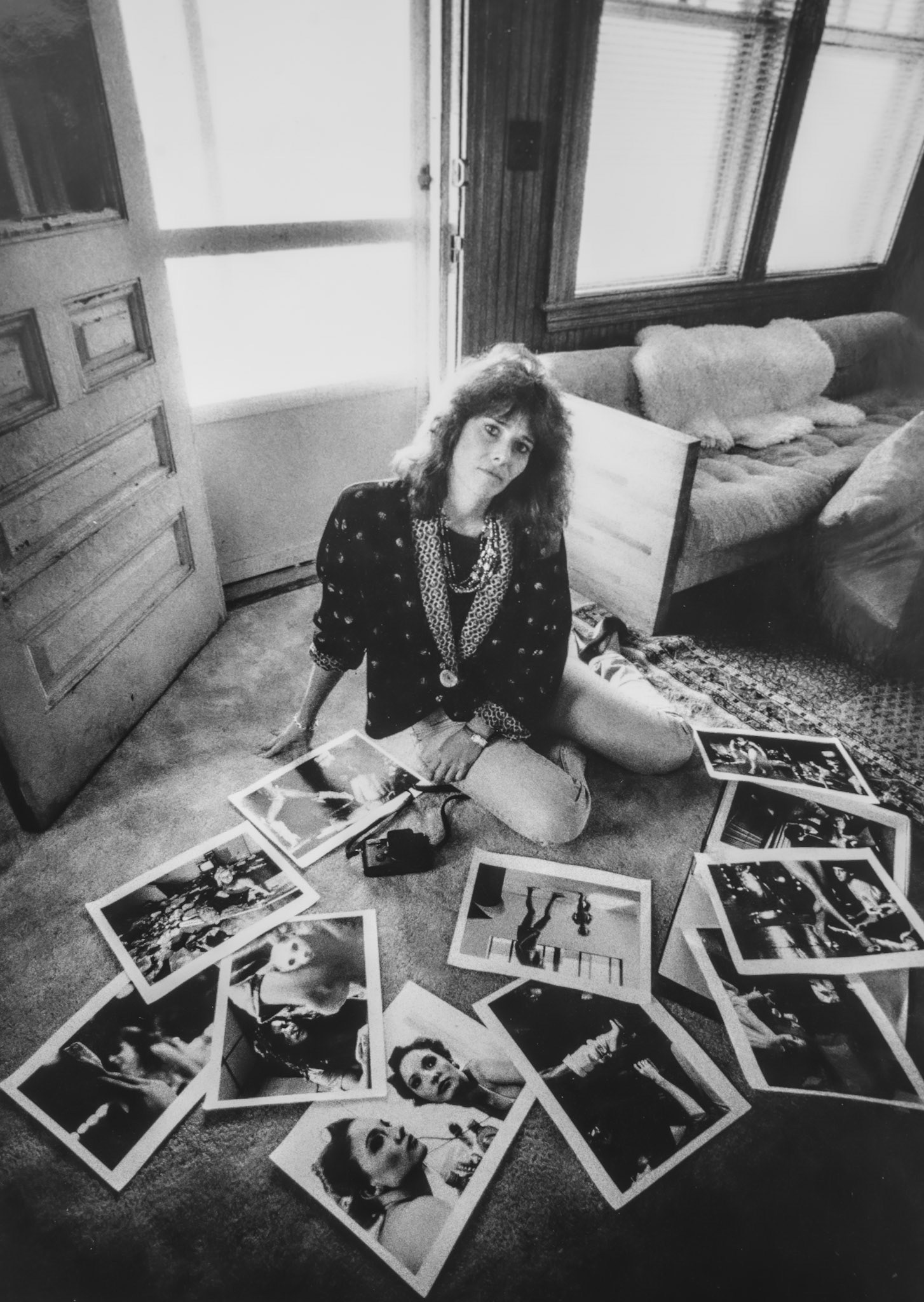
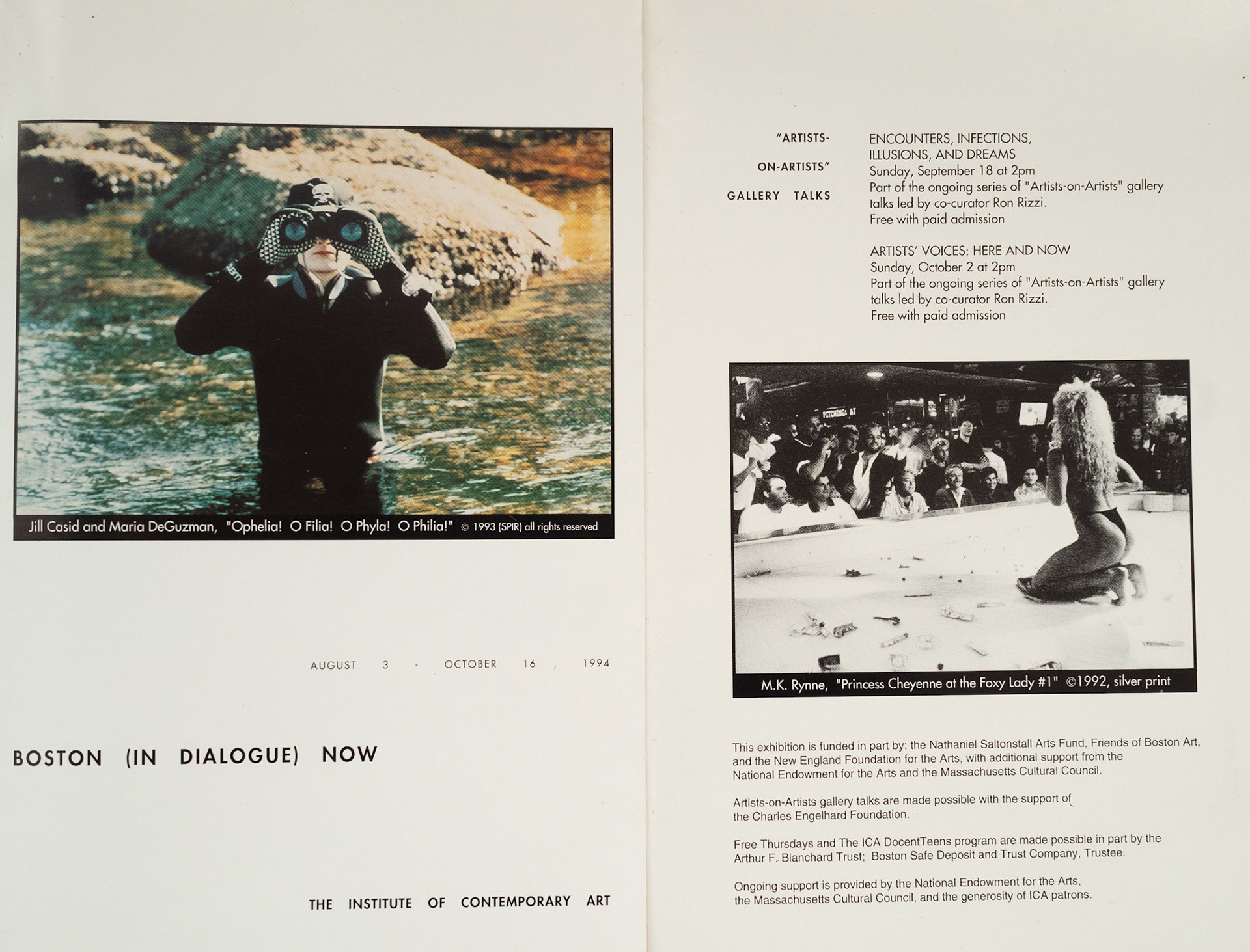

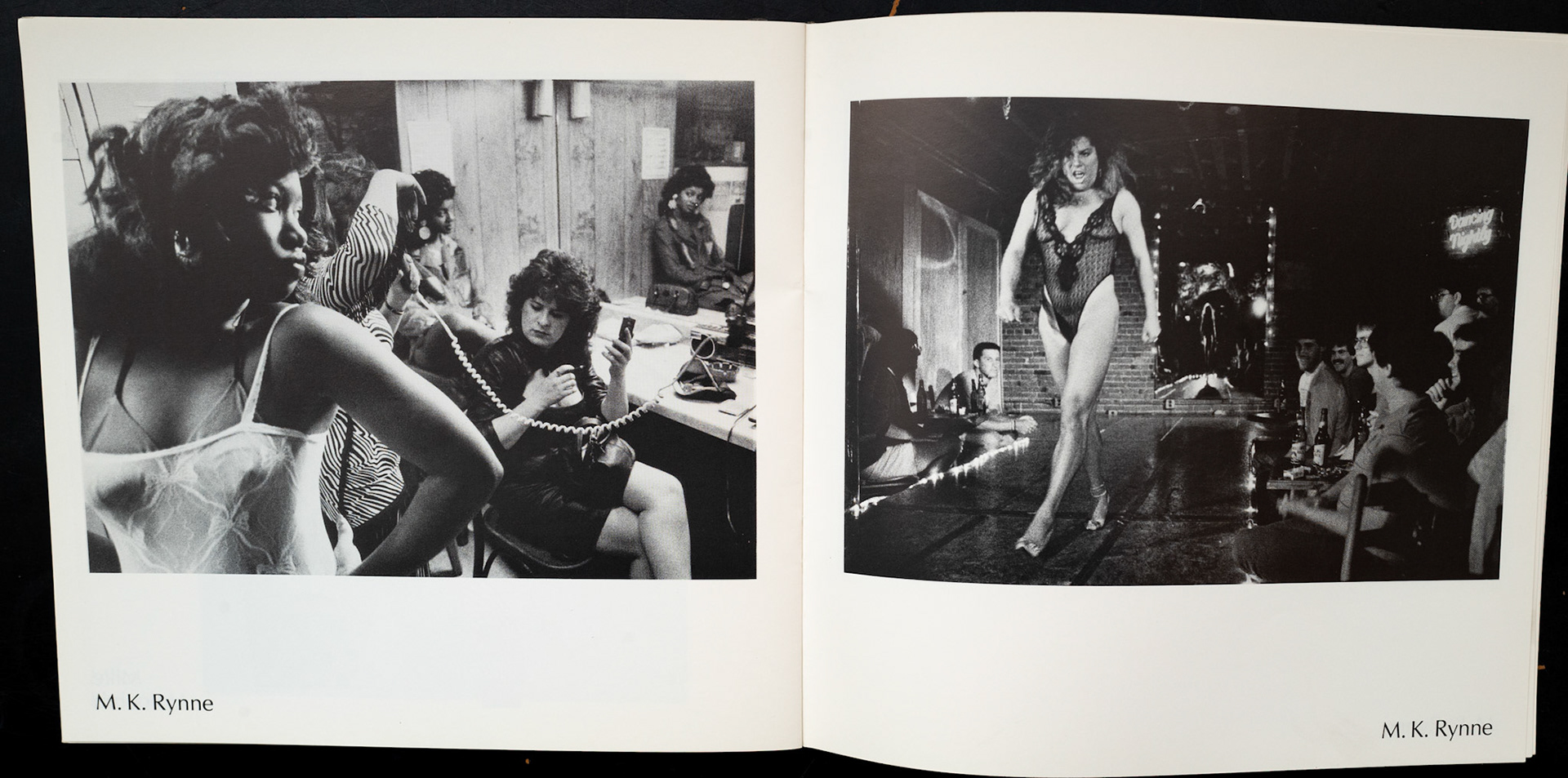
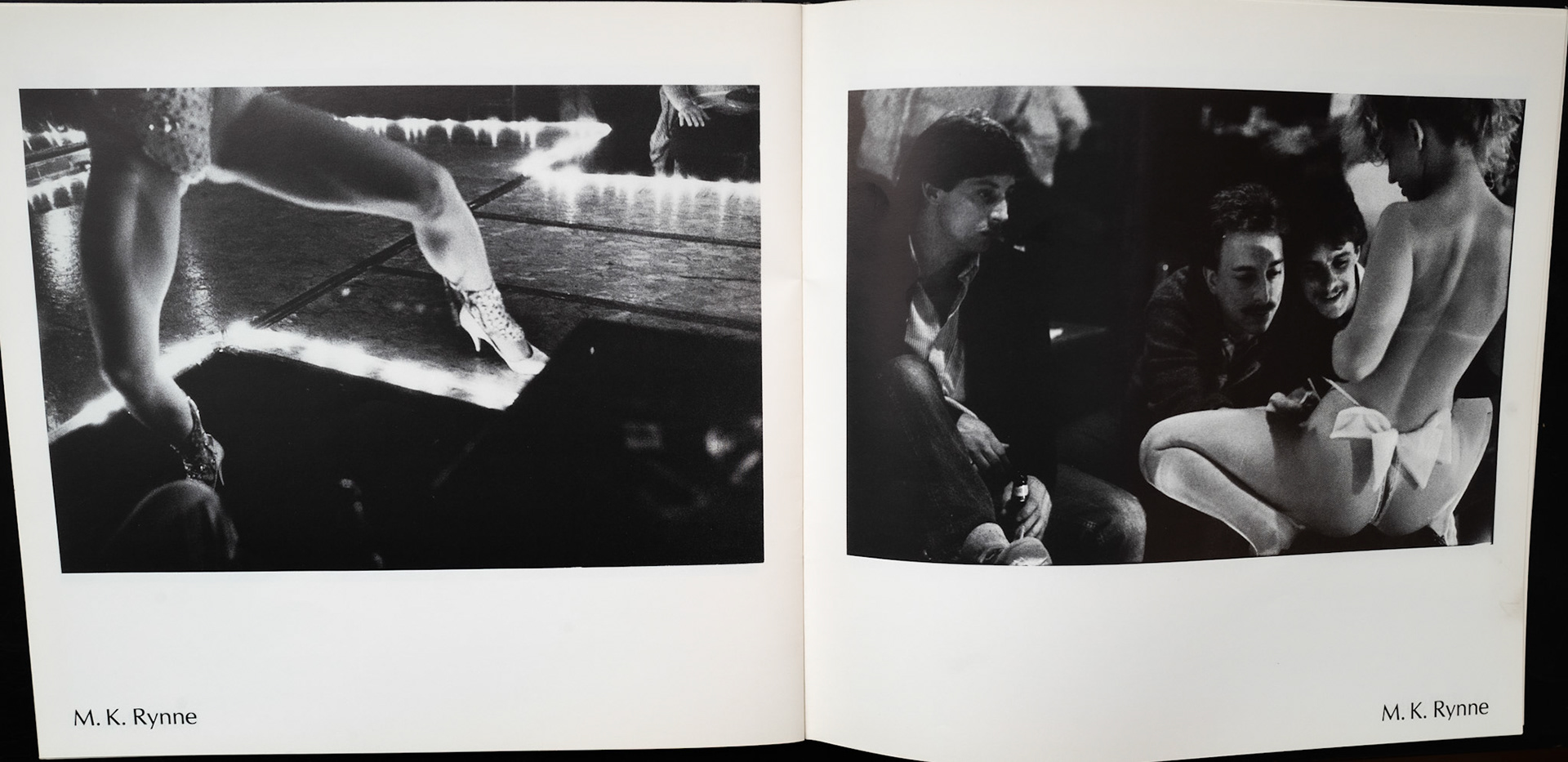
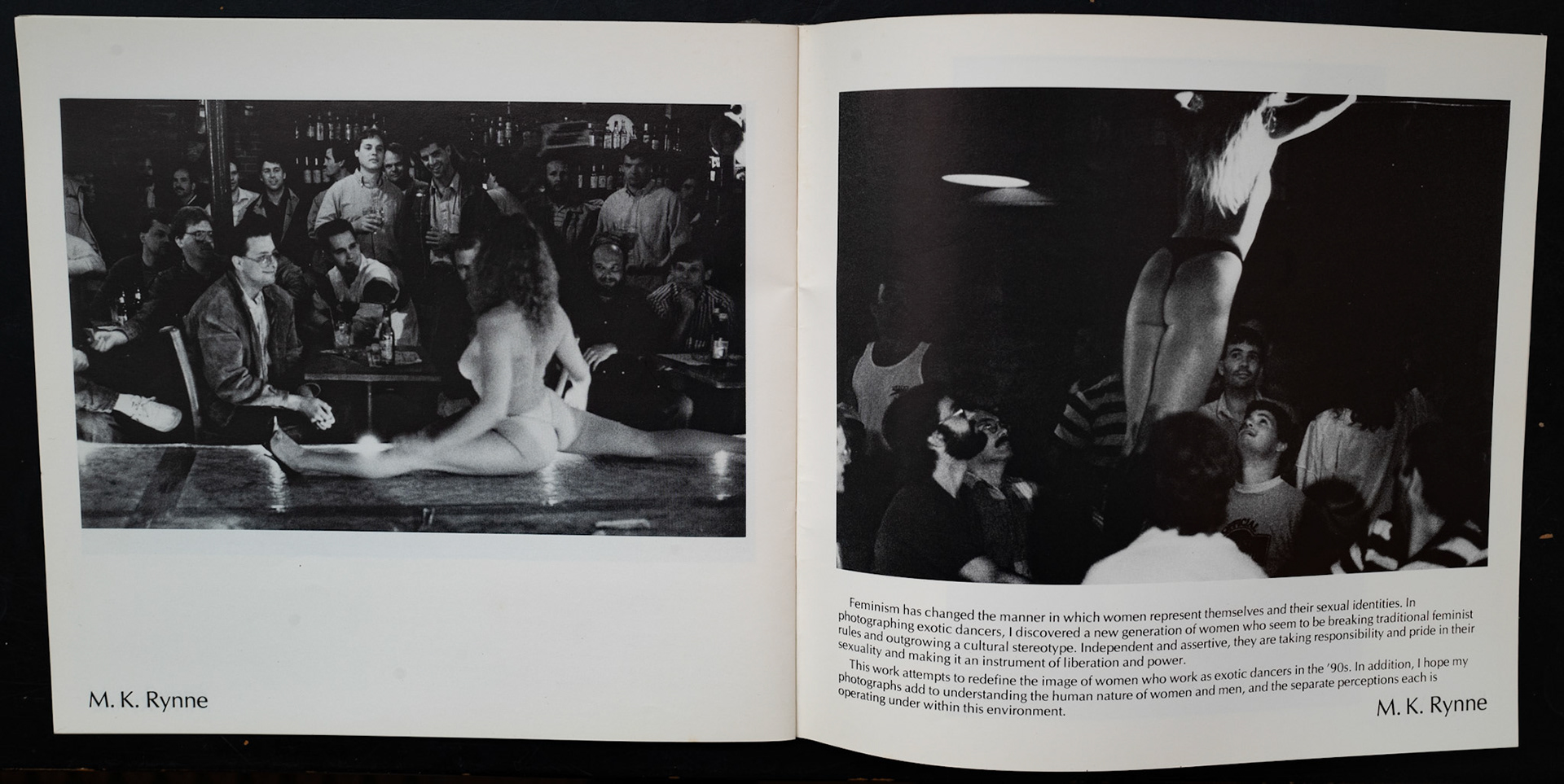
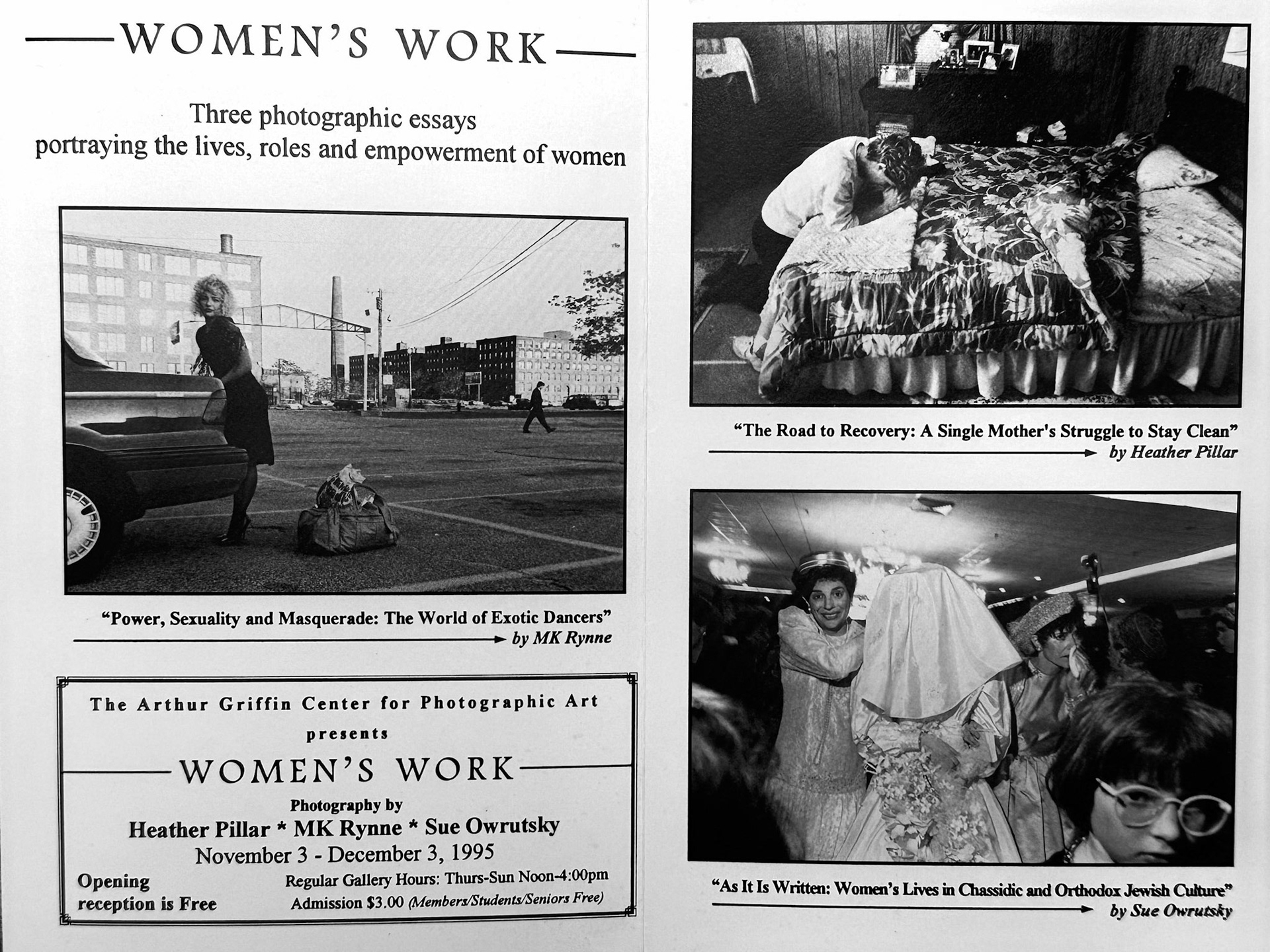
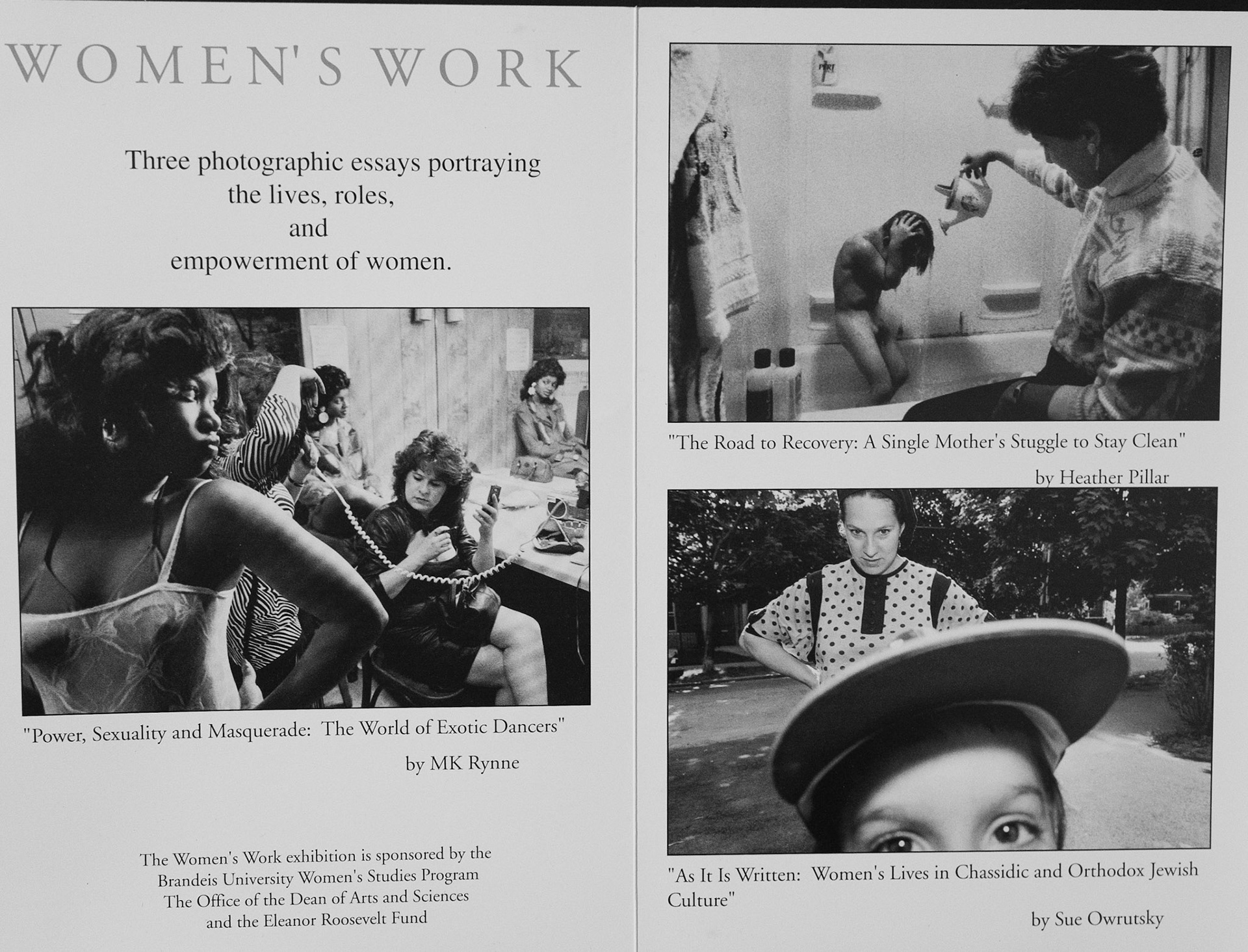

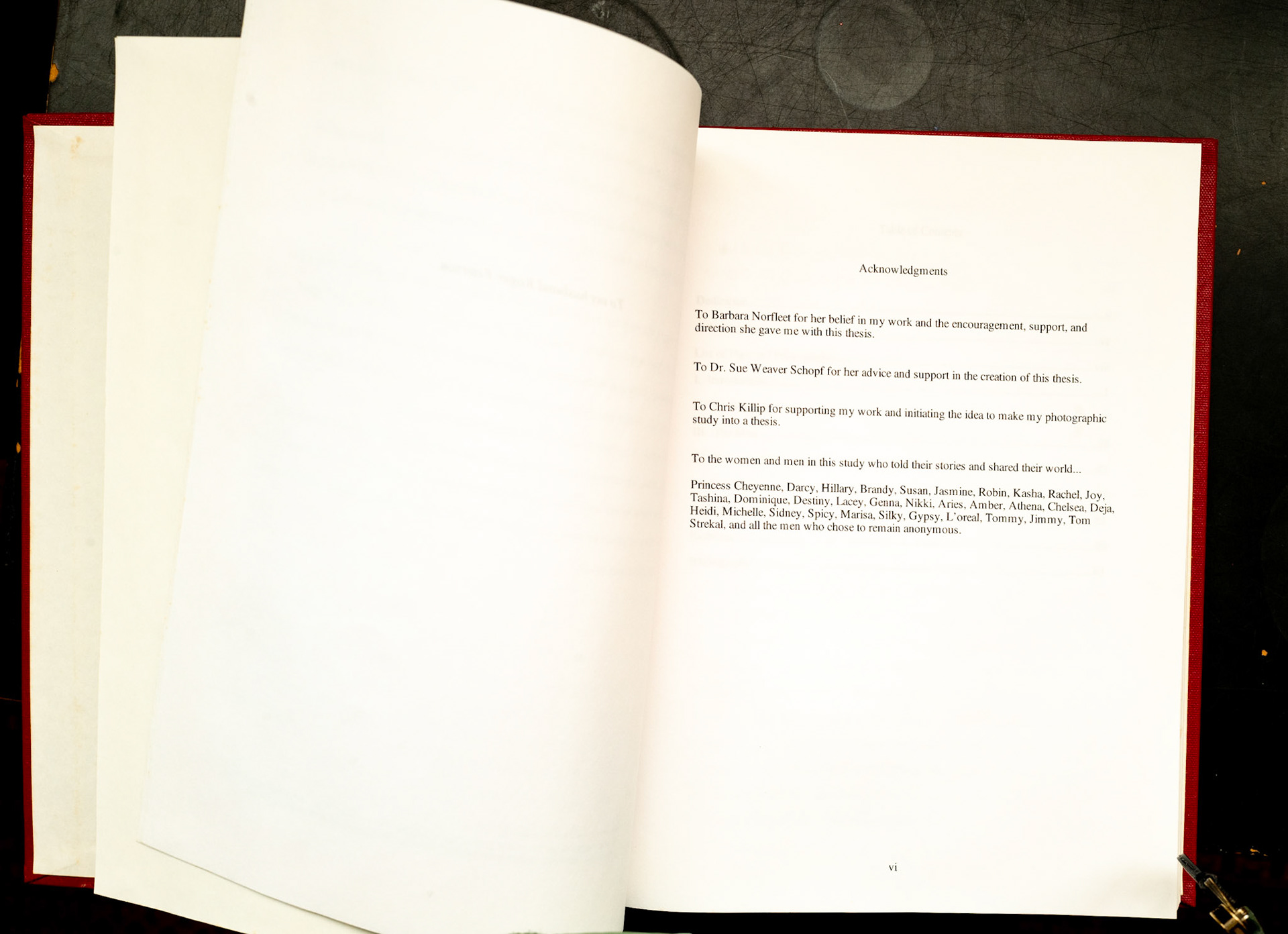
The Exotic Dancer Project offers a glimpse into a complex and often contradictory world of exotic dancers, where money, control, sexuality and societal judgment collide. It explores the paradox of women working as topless dancers—stigmatized in public, yet revered in the private world of gentleman’s clubs— where they command control, authority, attention, and income. My work reframes representation through a female lens and offers a feminist counter-narrative that defies stereotypes. The project began in 1990, when an exotic dancer asked me for headshots. She casually described stripping as “a fun and empowering way to make money”—a perspective that shattered my own unconscious assumptions. That encounter sparked my curiosity and opened the door to a four-year journey photographing dancers across Massachusetts, Maine, and Rhode Island. What I found upended every cliché. In clubs, behind dressing room curtains, and in their personal lives—dorms, kitchens, gyms—I documented women who were neither victims nor vamps. They were students, mothers, and professionals dancing topless to fund futures, support families, pay for school, invest in real estate, and assert control over their bodies, time, and income. Shot on grainy black-and-white film, my project evolved into a true collaboration—made possible by trust. The women invited me in, knowing I wasn’t there to exploit, but to witness. The resulting work was a top finalist for the Henri Cartier-Bresson Award in 1991 and the basis for my Harvard master’s thesis in 1996, Power, Sexuality & Masquerade: A Female Perspective of the Striptease. Now, more than thirty years later, I'm developing this project with my photographs and the dancers' words into a book titled Stripped & Crowned. The project has come full circle, as I'm currently reconnecting with several of the original dancers, now in their 50’s and 60’s, to create its final chapter.
click box to play audio















